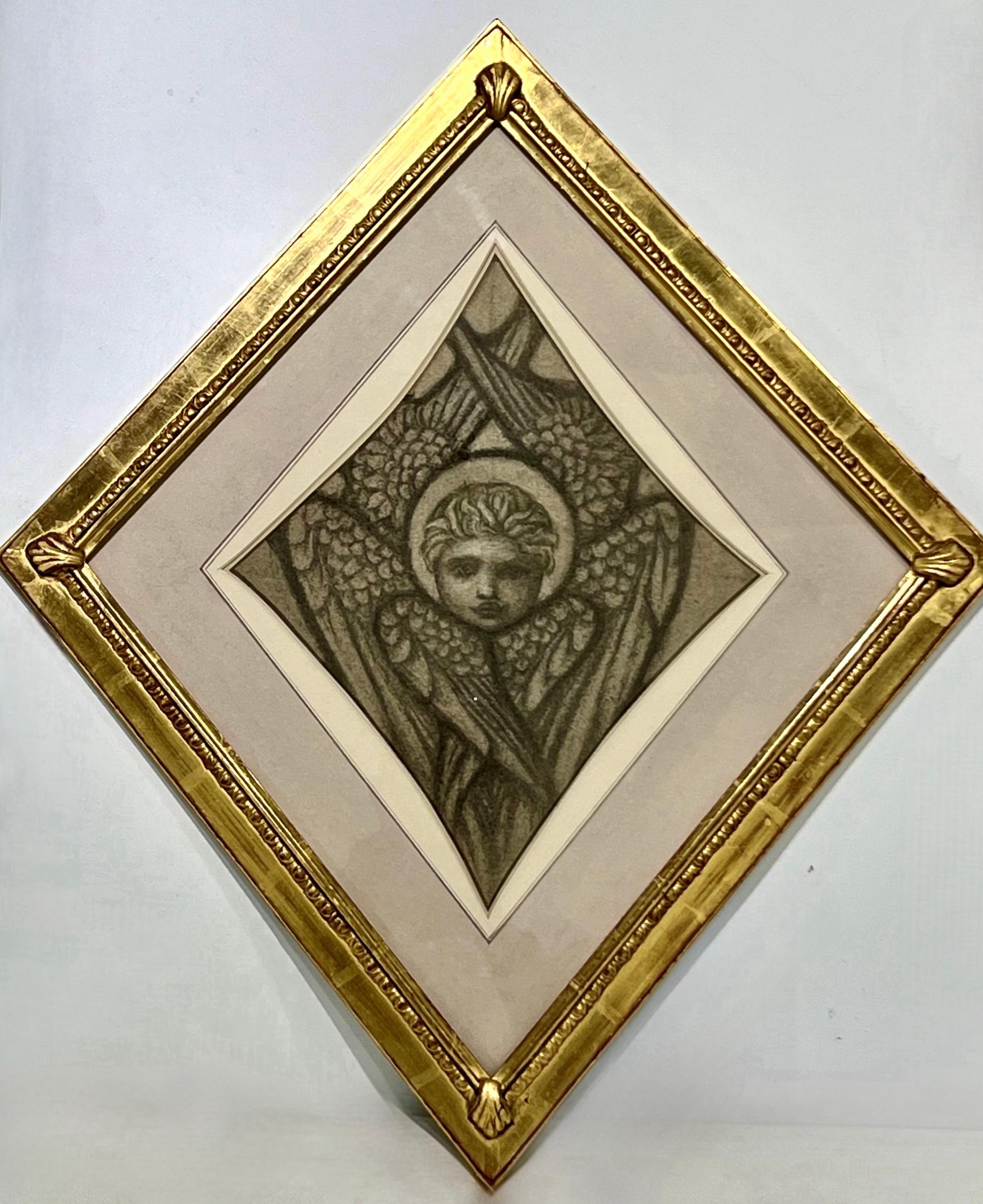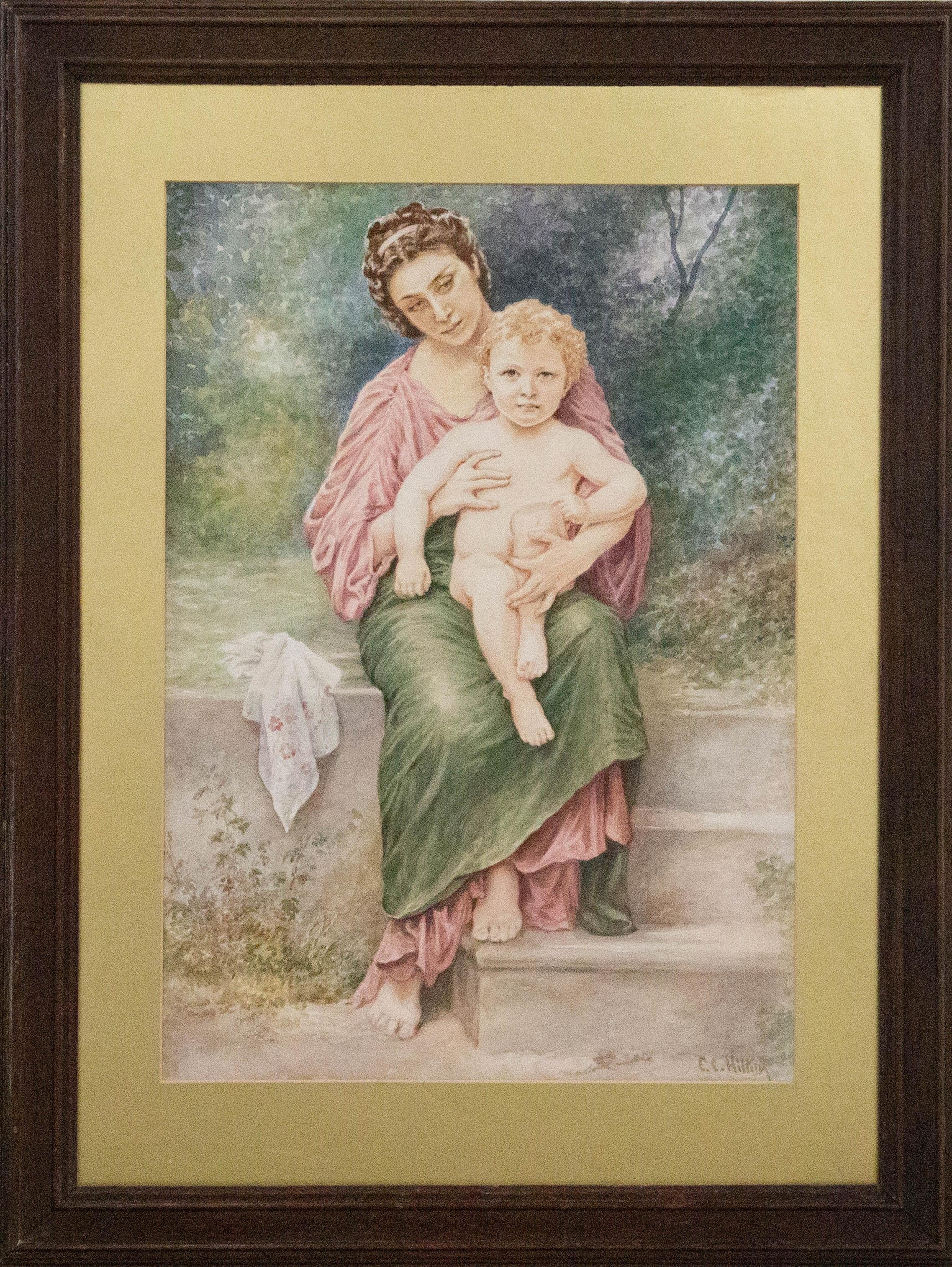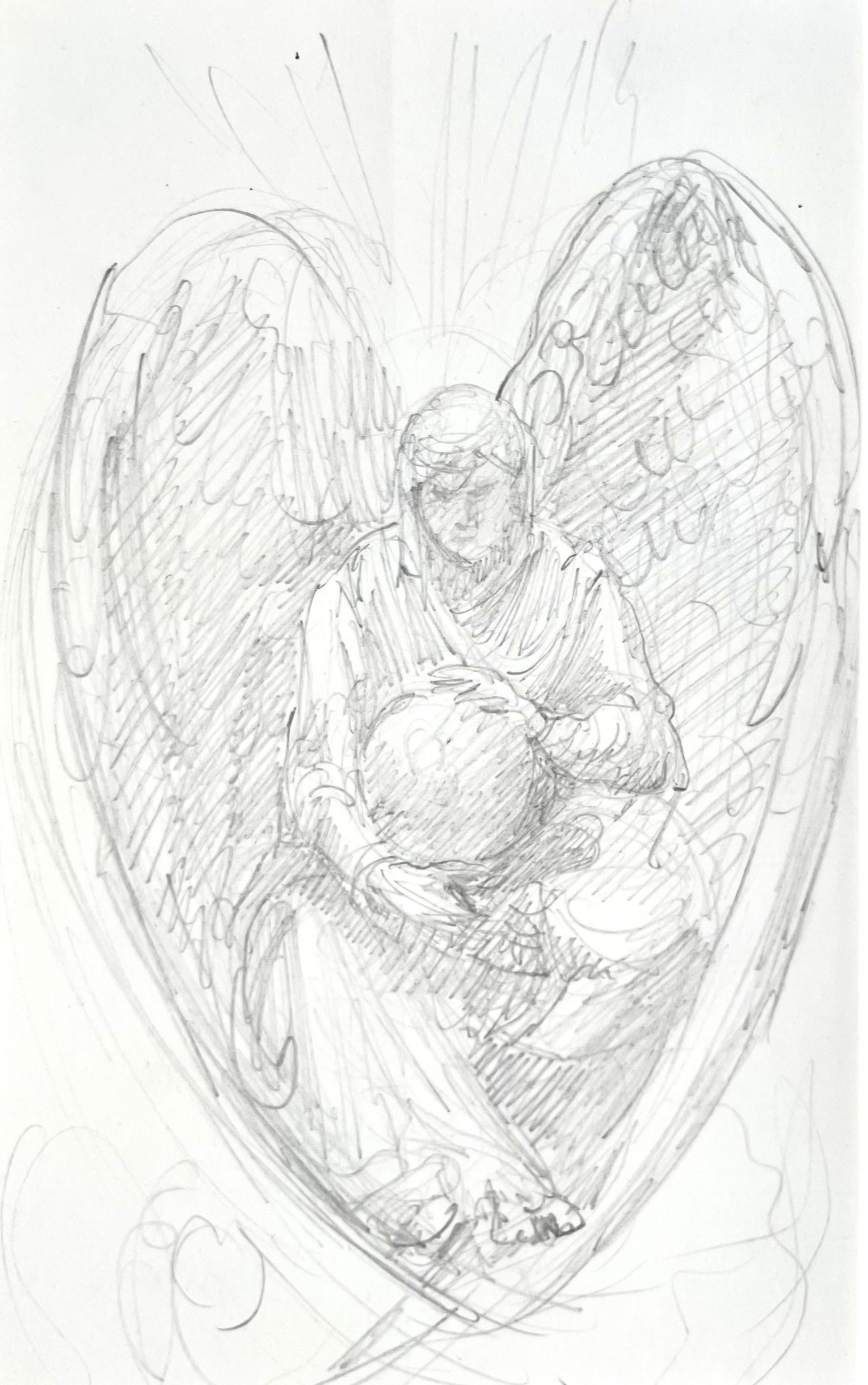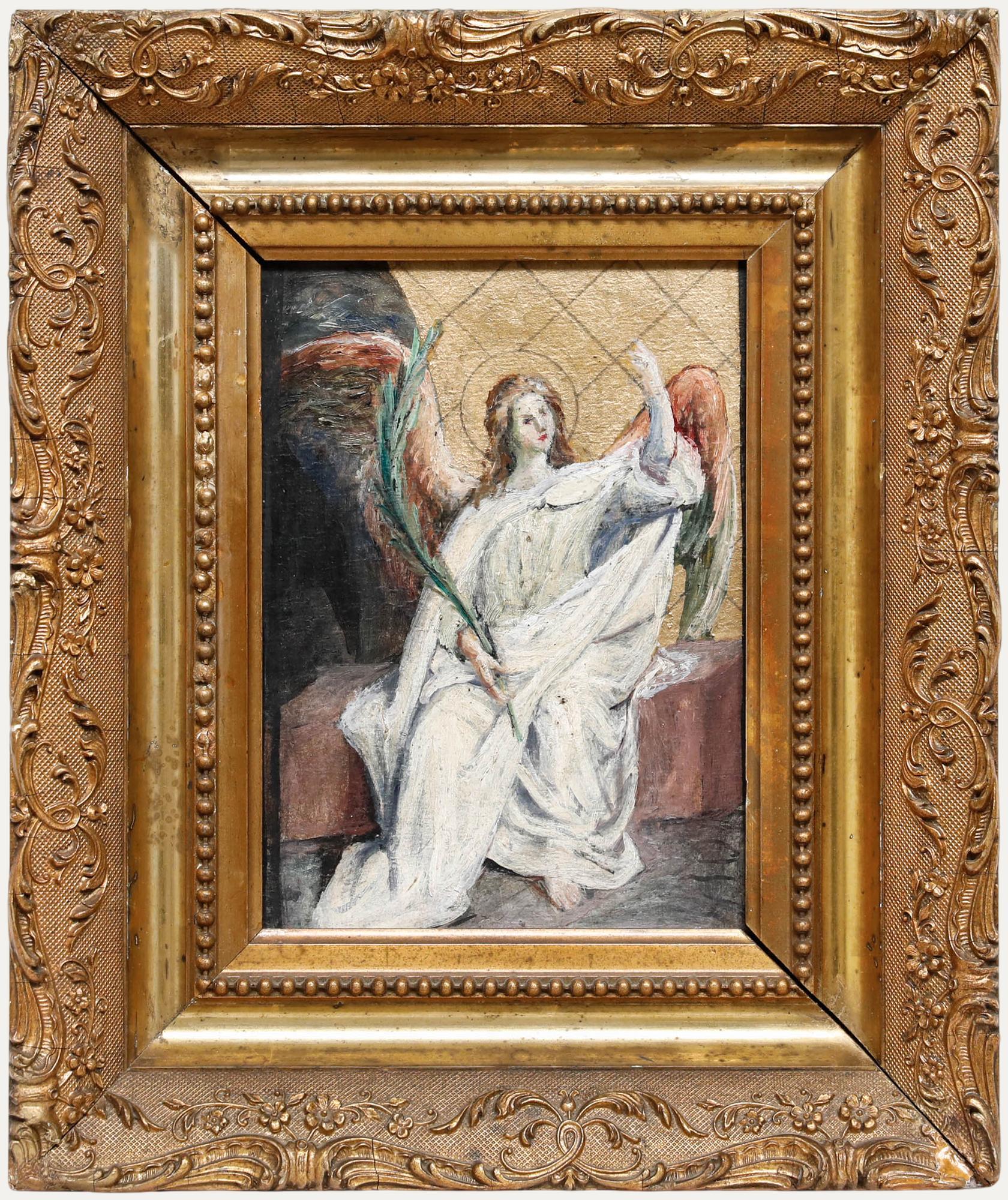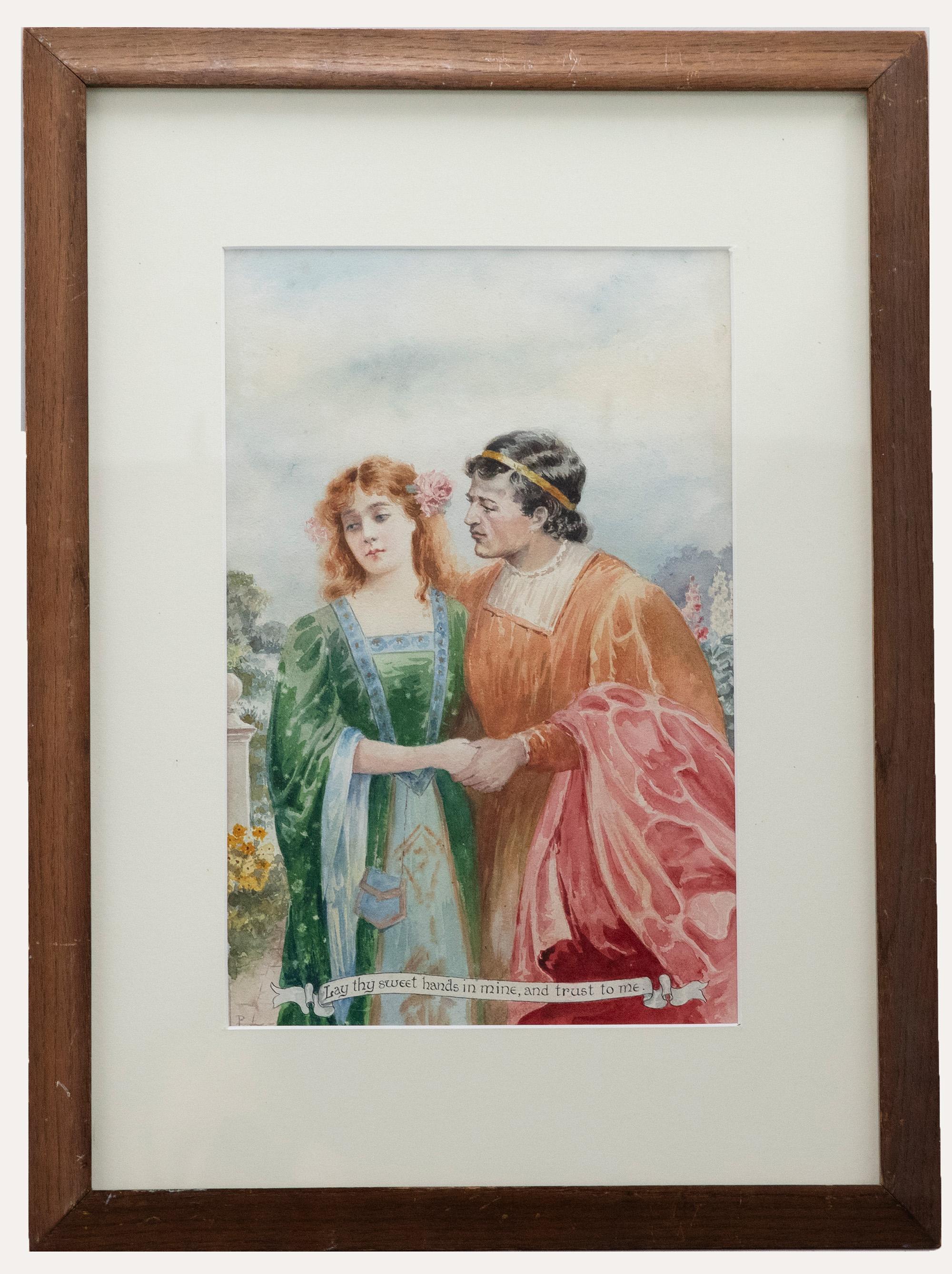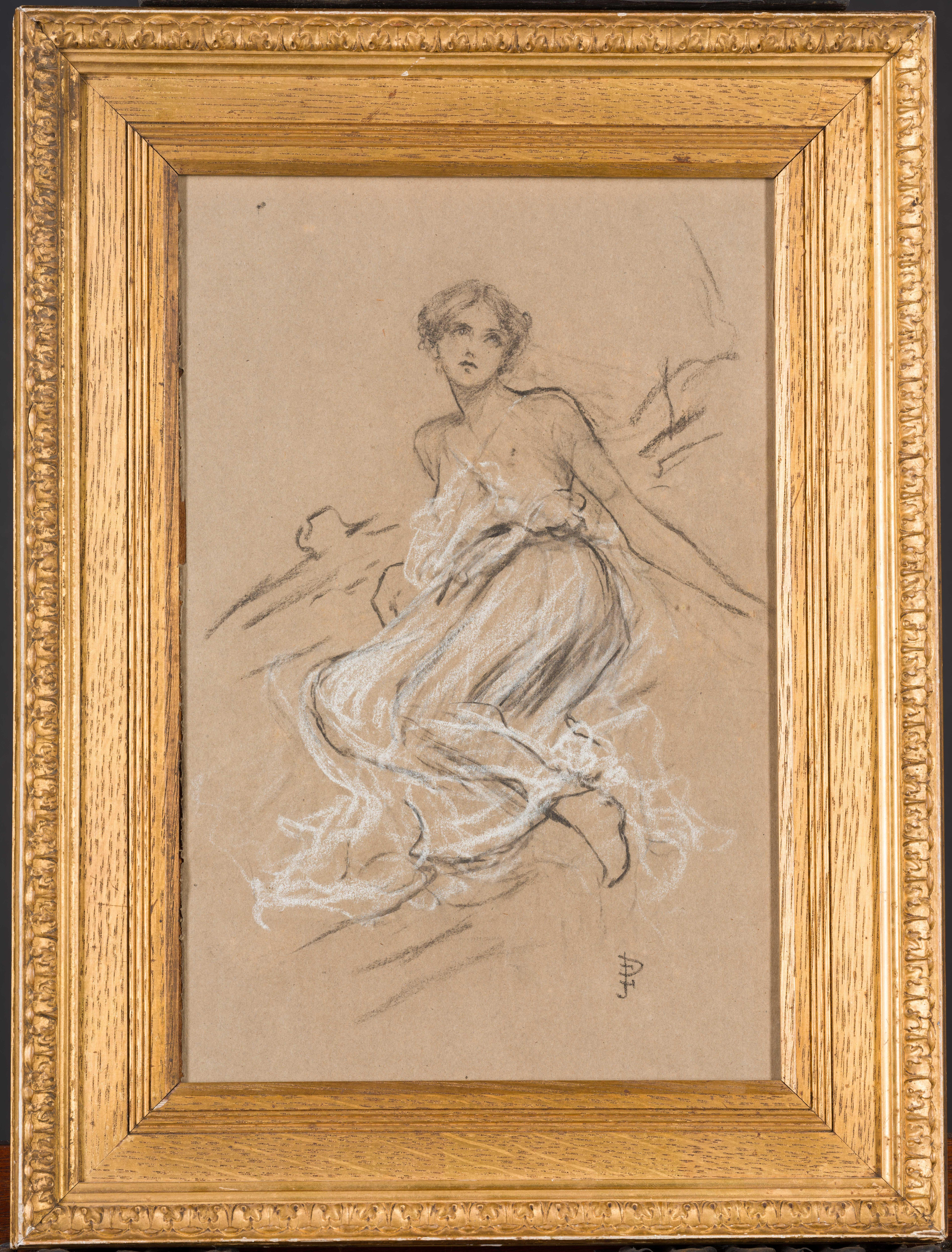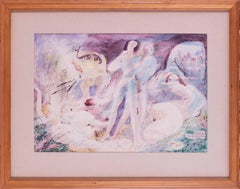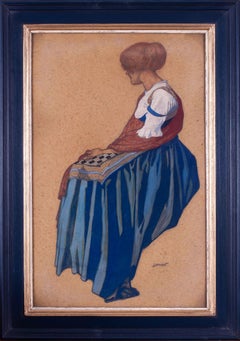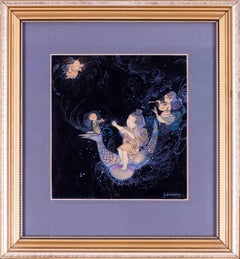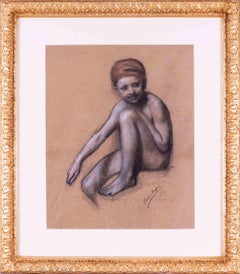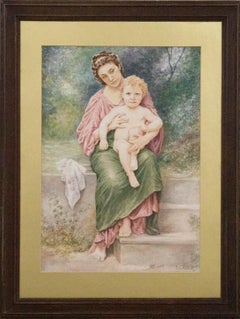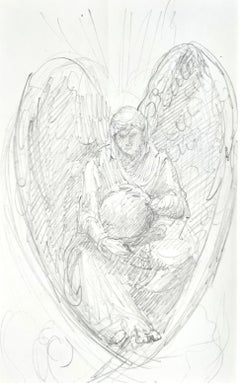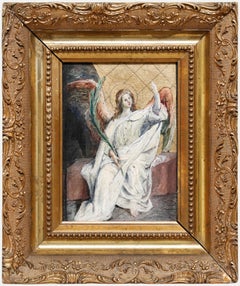Items Similar to British, turn of the century watercolour of an angel by Lexden Lewis Pocock
Want more images or videos?
Request additional images or videos from the seller
1 of 8
Lexden Lewis PocockBritish, turn of the century watercolour of an angel by Lexden Lewis Pocock
$1,307.72
£950
€1,116.81
CA$1,809.01
A$1,993.65
CHF 1,043.74
MX$24,488.33
NOK 13,114.85
SEK 12,274.46
DKK 8,338.56
About the Item
Lexden Lewis Pocock (British, 1850 – 1919)
An angel
Watercolour on paper
Signed ‘Lexden. L. Pockock’ (lower right)
15.1/4 x 6.1/2 in. (38.8 x 16.3 cm.)
Lexden Lewis Pocock (1850–1919) was a British artist celebrated for his evocative landscape and marine paintings. Known for his masterful use of realism and attention to atmospheric detail, Pocock captured the essence of the natural world with remarkable precision.
Working during a transformative period in British art, he remained dedicated to traditional techniques, even as the art world embraced new movements. In addition to his paintings, Pocock was a skilled illustrator, contributing to various publications of his time.
While not as widely recognized as some of his contemporaries, his work was admired during his lifetime and continues to be appreciated today for its technical excellence and timeless beauty. His paintings are held in collections that offer a window into the landscapes and seascapes of 19th- and early 20th-century Britain.
- Creator:Lexden Lewis Pocock (1850 - 1919, British)
- Dimensions:Height: 15.25 in (38.74 cm)Width: 6.5 in (16.51 cm)Depth: 1 in (2.54 cm)
- Medium:
- Movement & Style:
- Period:
- Condition:In overall very good order, with a gilt slip edge, in a fresh white mount behind glass in a gilt moulded frame with some foliate decoration.
- Gallery Location:Petworth, GB
- Reference Number:1stDibs: LU540315951502
About the Seller
4.9
Platinum Seller
Premium sellers with a 4.7+ rating and 24-hour response times
Established in 2010
1stDibs seller since 2017
272 sales on 1stDibs
Typical response time: 2 hours
- ShippingRetrieving quote...Shipping from: Petworth, United Kingdom
- Return Policy
Authenticity Guarantee
In the unlikely event there’s an issue with an item’s authenticity, contact us within 1 year for a full refund. DetailsMoney-Back Guarantee
If your item is not as described, is damaged in transit, or does not arrive, contact us within 7 days for a full refund. Details24-Hour Cancellation
You have a 24-hour grace period in which to reconsider your purchase, with no questions asked.Vetted Professional Sellers
Our world-class sellers must adhere to strict standards for service and quality, maintaining the integrity of our listings.Price-Match Guarantee
If you find that a seller listed the same item for a lower price elsewhere, we’ll match it.Trusted Global Delivery
Our best-in-class carrier network provides specialized shipping options worldwide, including custom delivery.More From This Seller
View AllModern British 20th C watercolour drawing of Thetis laments by Hughes-Stanton
By Blair Hughes-Stanton
Located in Petworth, West Sussex
Blair Hughes-Stanton – ‘Thetis Laments’ 1952
The watercolour is signed by the artist lower right in pencil 'Blair HS' and dated (19)52. It was exhibited in June 1954 at The Leicester...
Category
20th Century English School Figurative Drawings and Watercolors
Materials
Ink, Watercolor
Scottish early 20th Century watercolour painting of a sitting girl by Lamont
Located in Petworth, West Sussex
John Charles Lamont ARSA
(Scottish, 1894-1948)
“The sitting girl”
Pencil, watercolour, body colour and pastel Signed ‘LAMONT’ (lower-right)
23. 3/4. X 14. 3/4 in (60.5 x 37.5 cm)
Category
20th Century Academic Figurative Drawings and Watercolors
Materials
Pastel, Watercolor, Pencil
British, early 20th Century oriental scene by female artist Katie Blackmore
Located in Petworth, West Sussex
Katie Blackmore (British, 1890 – 1957)
Oriental fantasy
Ink and gouache on paper
Signed ‘K Blackmore’ (lower right)
9 x 8.3/8in. (22.8 x 21.2 cm.)
A Scottish figurative and decorative artist, Katie Blackmore was closely associated with both Jessie Marion King...
Category
20th Century Academic Figurative Drawings and Watercolors
Materials
Paper, Ink, Gouache
British early 20th Century pastel drawing of Puck, Midsommers Night Dream
Located in Petworth, West Sussex
Herbert James Draper (British, 1863-1920)
Puck
Pastel
Inscribed ”PUCK” (middle left) and further inscribed and signed `Study for Puck/ Herbert Dra...
Category
20th Century Academic Figurative Drawings and Watercolors
Materials
Pastel
British 19th Century drawing of a nude by Edward Stott
By Edward Stott
Located in Petworth, West Sussex
Edward Stott, ARA (British, 1859 - 1918)
Reclining nude
Pastel and black crayon
8.1/2 x 12.1/4 in. (21.7 x 31.2 cm.)
Provenance: Abbott and Holder, London
A few years after its foundation in 1886, a critic referred to the New English Art Club as that Steery, Starry, Stotty. Stotty referred to William Stott of Oldham and Edward William Stott. The four men had in common the love French plein air painting...
Category
19th Century Academic Nude Drawings and Watercolors
Materials
Crayon, Pastel
Jean Dupas art deco drawing, 'The Angel of light'
By Jean Dupas
Located in Petworth, West Sussex
Jean Dupas (French, 1882 – 1964)
The angel of light
Pen and ink and charcoal on paper
14.3/4 x 12.1/2 in. (37.5 x 31.8 cm.)
One of the leading artists of the Art Deco period, Jean Théodore Dupas was the son of a merchant marine captain and began his adult life as a merchant seaman. Poor health meant that he had to abandon this career and he enrolled in art school instead, first in his native Bordeaux and later in Paris. He won the Prix de Rome in the category of painting in 1910 and studied at the Académie de France in Rome, from where he sent several paintings to the Paris Salons, although his studies were interrupted by the outbreak of war. Dupas’s work came to public prominence on the occasion of the seminal Exposition des Arts Décoratifs in Paris in 1925. He was chosen by the furniture designer Jacques-Emile Ruhlmann to provide paintings for the latter’s Maison d’un collectionneur, alongside furniture by Ruhlmann and objects by many of the leading Art Deco craftsmen of the day, while other paintings by Dupas were also displayed to great effect elsewhere in the Exposition.
In the late 1920’s and 1930’s Dupas won a number of important and prestigious commissions. In 1926 he worked alongside Ruhlmann and the sculptor Alfred Jeanniot on the decoration of the tearoom of the ocean liner Ile-de-France; the first of the grand transatlantic ships to be built in France after the First World War. By this time Dupas had firmly established his reputation. Writing in 1927, his fellow artist George Barbier could already note that ‘Few artists have at such an early age attained such a degree of success, or gathered around them such swarms of imitators and disciples.’
Dupas reached the height of his fame in the mid 1930’s, and in 1934 he received his most important commission to date; a series of large glass murals...
Category
Early 20th Century Art Deco Figurative Drawings and Watercolors
Materials
Paper, Crayon, Ink, Pen
You May Also Like
A Seraph (no. 1)
Located in Atlanta, GA
Framed dimensions 18.5 x 17.5 inches
One of two original drawings of seraphim created for the British firm of stained-glass designers Shrigley and Hunt. The drawings are by the cele...
Category
1880s Victorian Figurative Drawings and Watercolors
Materials
Chalk, Watercolor
Colin Clough Hilton (1902–1984) -Early 20th Century Watercolour,
Located in Corsham, GB
A beautiful early 20th Century (c. 1930-40) watercolour of impressive size. The scene shows a beautiful mother with dark hair in a Pre-Raphaelite style dress in pink and green, holdi...
Category
20th Century Portrait Drawings and Watercolors
Materials
Watercolor
Sir William Blake Richmond - An Angel - 19th Century British Drawing
By Sir William Blake Richmond
Located in London, GB
SIR WILLIAM BLAKE RICHMOND, RA
(1842-1921)
Study of an Angel
Pencil
Unframed, in mount only
18.5 by 10.5 cm., 7 ¼ by 4 ¼ in.
(mount size 32 by 25 cm., 12 ½ by 10 in.)
William Bl...
Category
Late 19th Century Pre-Raphaelite Figurative Drawings and Watercolors
Materials
Pencil
Sebastian Wirsching (b.1846) - Framed Early 20th Century Oil, The Angel
Located in Corsham, GB
Framed in an ornate gilt-effect frame. Handwritten label to the reverse. On board.
Category
20th Century Figurative Paintings
Materials
Oil
P. L. - C.1890 Watercolour, Lay thy Sweet Hands In Mine, and Trust to Me
Located in Corsham, GB
A charming watercolour scene depicting a classically dressed couple in a summer garden. Inscribed to the lower border 'Lay thy sweet hands in mine, and trust to me' in a ribbon banne...
Category
Late 19th Century Figurative Drawings and Watercolors
Materials
Watercolor
A Renaissance Angel.
Located in Douglas, Isle of Man
Evelyn de Morgan 1855 - 1919, was an English painter. She was associated with the Pre-Raphaelite movement. She was born Mary Evelyn Pickering in London into a wealthy family her fath...
Category
Late 19th Century Figurative Drawings and Watercolors
Materials
Paper, Chalk
More Ways To Browse
Turn Of The Century Painting
Painting Of An Angel
Marine Watercolours
19th Century British Marine Painting
19th Century Paintings Of Angels
S Grunvald
Tide Figure
Vintage Las Vegas Showgirls
Watercolour Antique Pre 1900 Paintings
Zero Mostel
Zuniga Pastel
Betty Rees Heredia
Blair Hobbs
Breastfeeding Painting
Carl Fredrik Reutersward
Conger Metcalf
Drexel European Theme
E Nevil
